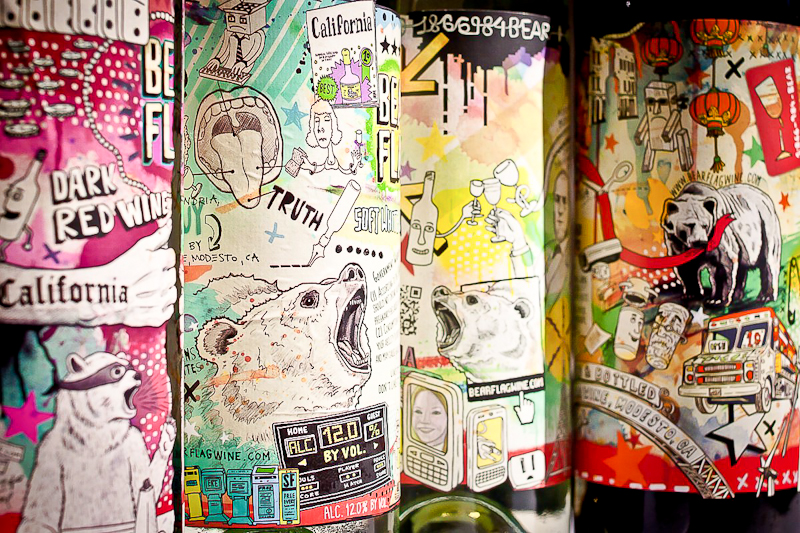Local wine blogger Claire Fowles is not a wine elitist.
“At the end of the day, it’s fermented grape juice,” she said to me over early morning coffee at a Bridgehead in the Glebe.
Blogging since 2010 for Ottawa food and drink website foodieprints.com Fowles is an advocate of enjoyment over brand.
But, she did scold me for once making mimosas with Veuve Clicquot, luxury champagne that probably shouldn’t be sullied by orange juice.
“My philosophy on wine is drink what you like. If it makes you happy, that’s the perfect wine for you,” she said.
There is, however, another factor in many consumers’ choice of wine. It’s all in the label.
The wine industry’s emphasis on labels is a new phenomenon, Fowles said.
“Two hundred years ago they weren’t sticking wine labels on bottles.”
But what goes into a label?
Eduardo Bertone is a Madrid-based graphic designer. Born in Rosario, Argentina, he studied graphic design for four years, and began his professional career before graduation.
Now, he shows his work in exhibitions, books, and art magazines, but his work can also be seen on Californian wine label Bear Flag’s bottles.
Skeptics of semiology in wine labels need to look no further than Bertone’s work.
“The labels have a very varied symbology, and represent things like a young wine fighting against a classic and traditional wine,” Bertone says.
He says the labels’ symbols also include generational changes, socioeconomic differences, and Californian history—his main inspiration.
J. George Koneval, manager of graduate student bar Mike’s Place at Carleton, said he also sees symbolism in particular wine labels.
Koneval showed me the wine collection available for patrons, and said the label that makes an impression on him is from Barefoot, a wine brand based in California.
He said the popular picture of a foot’s imprint on a beach has a deeper significance than first meets the eye.
One example he cited was the Christian story of a man walking down the beach with two sets of footprints, which indicated that Jesus was walking with him. When one set of footsteps vanished and only one set remained, the man asked Jesus what had occurred. Jesus then replied that he was carrying him.
“Footsteps always mean something to me,” Koneval said. He also related the symbol to cowboy folklore.
“You can read from footsteps. Who it was, who is coming, if it’s an enemy coming.”
But not everyone looks at labels when choosing vino.
Mike’s Place server and second-year PhD student Lindsay Derraugh says most students just choose the house merlot or chardonnay, as they are the least expensive.
“It’s the older crowd, the profs, and sometimes visitors to campus, or other people, that generally drink the specialty wines,” Derraugh said.
And although average consumers may pay little to no attention to wine labels, the passion and intent behind the art thrives with artists like Eduardo Bertone.
“I like to share what is inside of me, my personal point of view of reality, my experiences, my dreams, what I love, what I hate,” he said.
“The main objective is to try and make people think, awaken their concerns, and wake them up.”
CLAIRE FOWLES’ STUDENT BUDGET FRIENDLY WINE LIST:
Sandbanks Estate Baco Noir.
This red from Prince Edward County, Ont. goes well with chocolate cake, and is the perfect wine for a meal with mom and dad.
Naveran Dama Extra Brut Cava.
For end-of-term mimosas, add orange juice and Grand Marnier to a champagne flute of this sparkling wine.
Alianca Terra Boa Tinto.
Looking for a medium-bodied red for that first date you want to impress? Or want to stay home and drink a whole bottle of wine to yourself and order in a pizza? Get the Portugese Terra Boa.
Errazuriz Estate Carmenere.
Full-bodied and Chilean. Oh and did we mention the wine is good too? Pair this white with a tuna sandwich or grilled chicken.
—@kristencochrane




